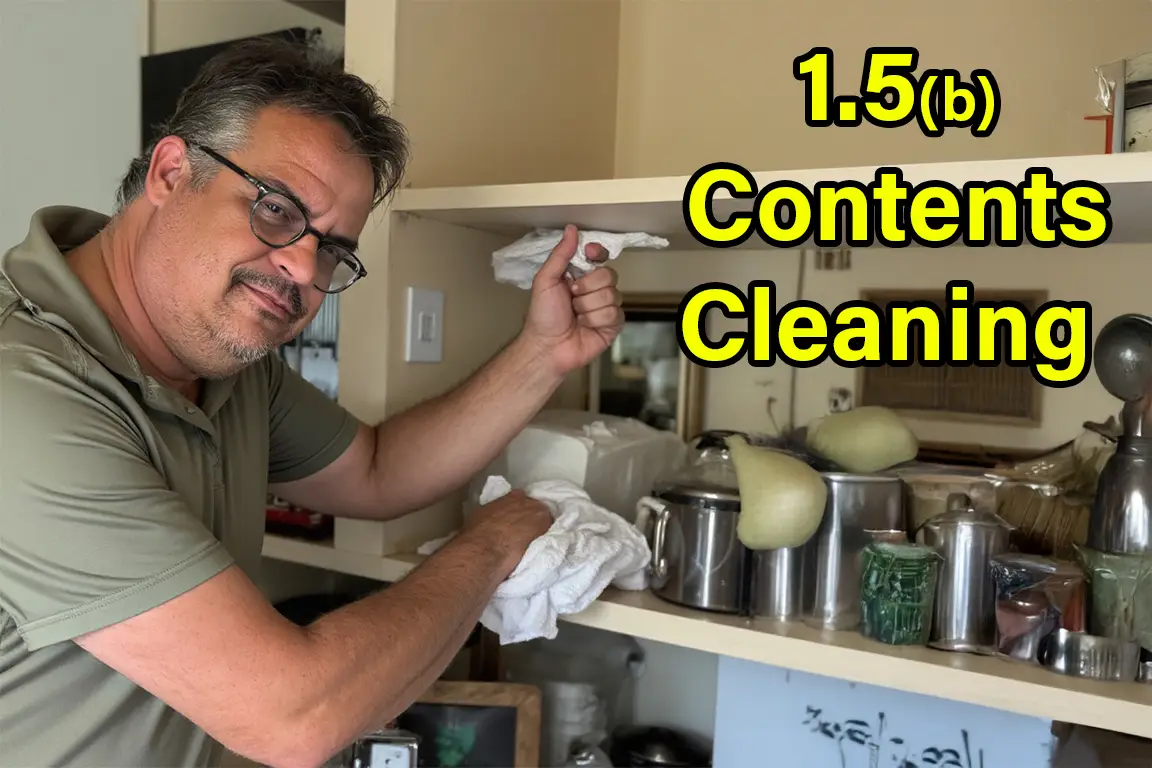Dry Methods
HEPA Vacuuming – The First Line of Defense
A true HEPA vacuum is designed to trap 99.97% of particles down to 0.3 microns. This is your foundation—removing the bulk of dust and contamination from surfaces before you do anything else.
• Use a sealed HEPA vacuum (not a shop vac with a HEPA filter add-on).
• Attach a brush head and vacuum in three directions: horizontal, vertical, and diagonal.
• Wipe the brush head between items to avoid cross-contamination.
• Ideal for hard surfaces, books, leather, sealed wood, and pre-cleaning fabrics.
💡 Pro tip: Always wear your PPE—especially a P100 or N95 mask—during vacuuming, as this step may temporarily stir up particles.
Air Washing – Dislodge Particles from Crevices
Air washing helps remove particles from hard-to-reach spaces—like electronics, carved wood, keyboard keys, or textured surfaces. It’s a gentle blowing technique, not a high-pressure blast.
✅ When it works well:
• For non-porous or semi-porous items like plastic, finished wood, electronics, or light décor
• On items that cannot be wiped or immersed
⚠️ When to avoid:
• Thick porous items, like pillows, upholstered furniture, or unsealed wood
• Anything that can trap or absorb particles deeper under air pressure
Recommended tools:
• Hair dryer (with the heat turned off)
• Small rechargeable electronics blower
• Mini battery-powered leaf blower
• Air compressor with adjustable low-pressure nozzle
How to do it safely:
• Only use air washing outside or in a well-ventilated cleaning zone.
• Use short, controlled bursts—not continuous airflow.
• Direct the air away from your face and other items.
Air washing is especially useful before wiping or vacuuming delicate or detailed items.
Dry Dusting or Wiping – Capture Loose Debris
After vacuuming and air washing, dry dusting can help grab any remaining loose debris before damp wiping.
Choose your method:
• Swiffer dusters – Great for tight areas, grooves, blinds, and light fixtures
• Dry microfiber cloths – Ideal for broad surfaces like shelves, dressers, and windowsills
💡 Tip: Wipe in one direction to trap particles instead of redistributing them. Change clothes or Swiffer heads frequently to avoid smearing contamination.

